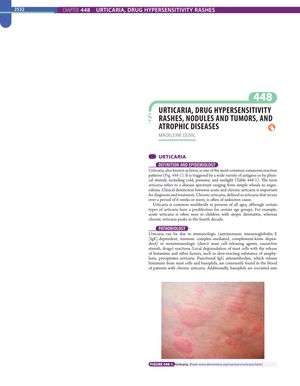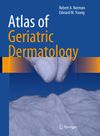Urticaria, Drug Hypersensitivity Rashes, Nodules and Tumors, and Atrophic Diseases
January 2012
in “
Elsevier eBooks
”

TLDR The document concludes that various skin conditions have specific treatments, ranging from antihistamines for urticaria to surgery and medication for tumors and chronic skin diseases.
The 2012 document reviews various skin conditions, including urticaria, drug hypersensitivity rashes, nodules, tumors, and atrophic diseases. It explains that urticaria is often idiopathic and involves mast cell degranulation and histamine release, treated with antihistamines and possibly corticosteroids or epinephrine. Drug hypersensitivity can lead to mild to severe rashes and is managed by discontinuing the drug and using corticosteroids and antihistamines. The document also covers skin tumors, both benign and malignant, such as dermatofibromas, neurofibromatosis, and Merkel cell carcinoma, and notes that melanocytic nevi can potentially evolve into melanoma. Inflammatory conditions like sarcoidosis, erythema nodosum, and panniculitis are discussed, with treatments varying based on the underlying cause. Atrophic skin conditions are associated with thinning of the skin due to factors like corticosteroid use and genetic disorders, while sclerotic lesions are linked to increased collagen production. Ulcers have multiple etiologies and may require immunosuppressive therapy, and scarring alopecia results in permanent hair loss. Lastly, keloids are described as hypertrophic scars that may need antineoplastic treatment post-surgery, and skin aging prevention is touched upon with the mention of topical vitamin A and sun protection.





